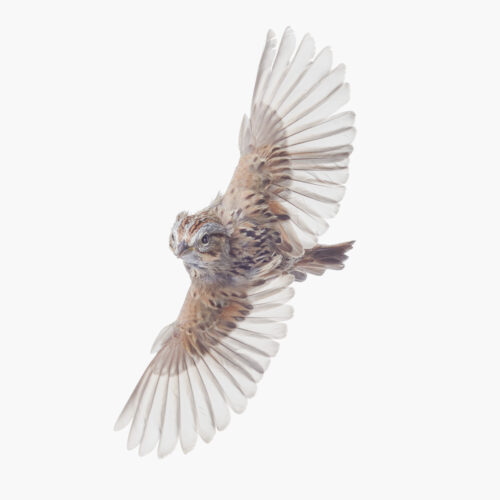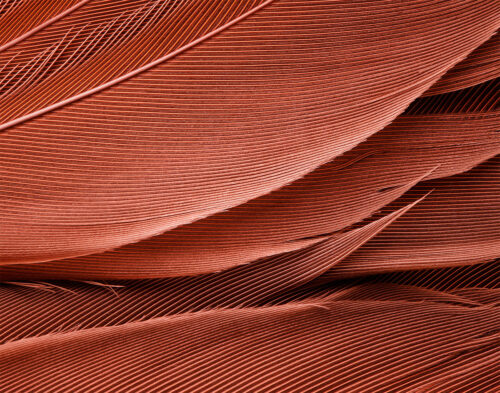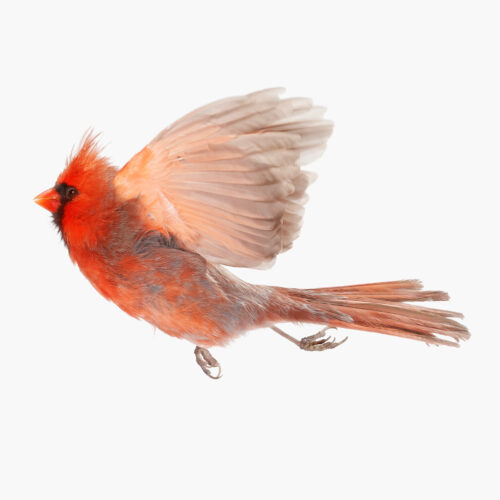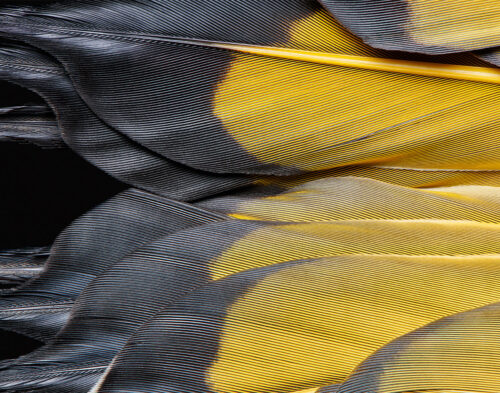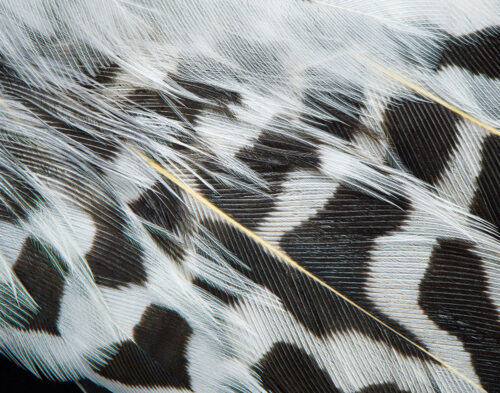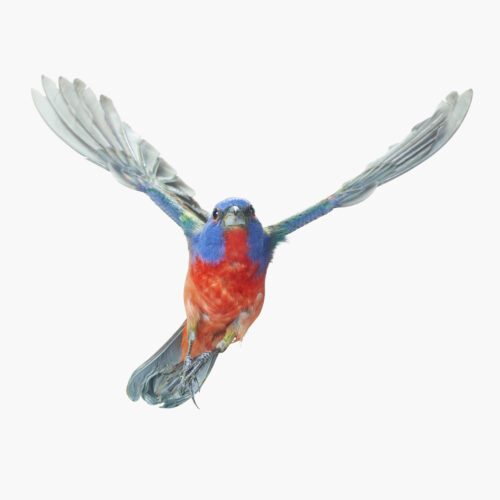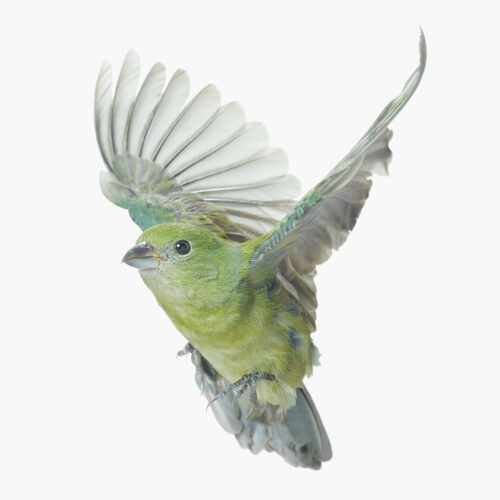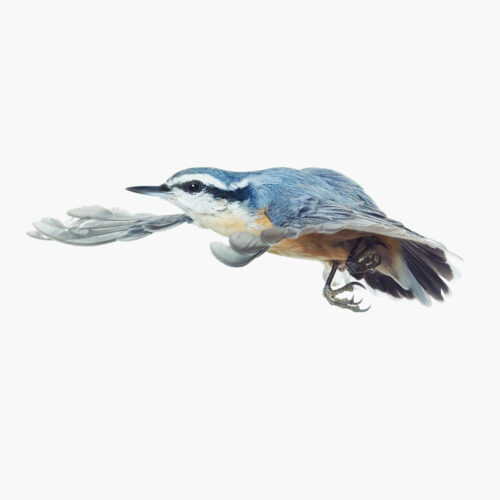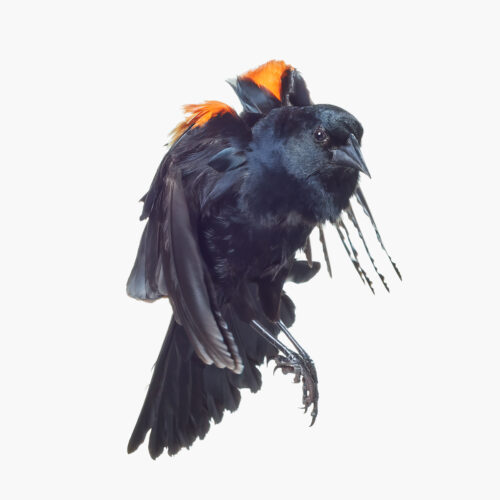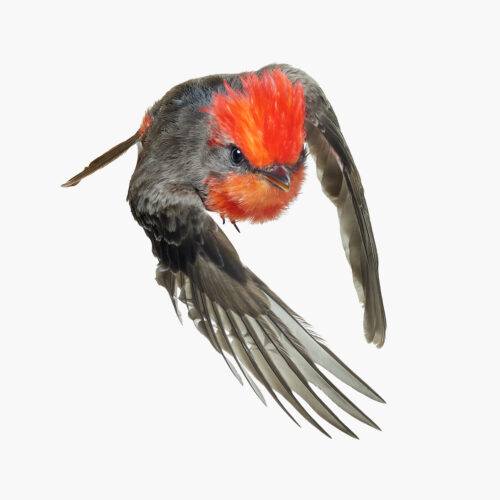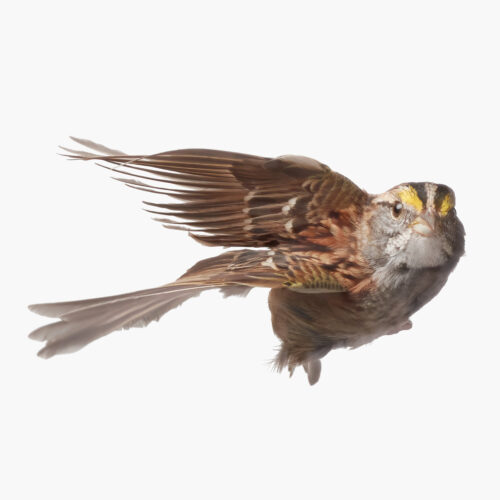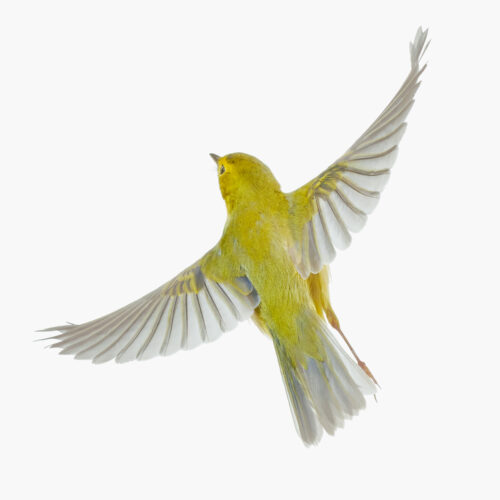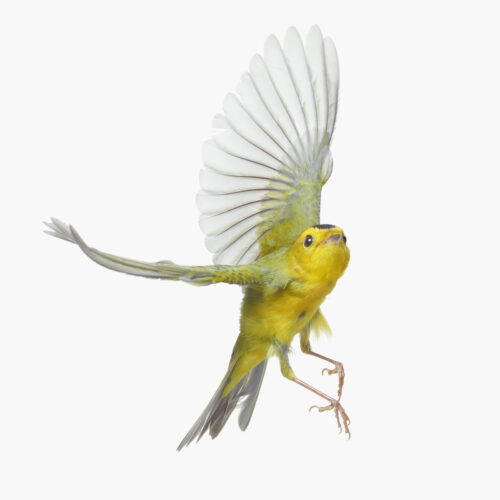-
Lincoln’s Sparrow
$42.00 – $1,332.00Streaky brown, with a buffy eye-ring, Lincoln’s Sparrows are known to be a bit shy. This medium-sized, insect-eating bird forages near or on the ground — and builds its nest there too. It is named for Thomas Lincoln, who traveled with naturalist John James Audubon on a bird-finding trip to Labrador. -
Lucifer Hummingbird
$42.00 – $1,332.00While the male Lucifer Hummingbird sports a purple throat and long narrow tail, the female complements its green back and head feathers with a buff-colored breast and short tail. Both have the characteristic curved bill. -
Northern Cardinal Wing Print
$90.00 – $1,332.00A sweeping vista in red — contour feathers of the Northern Cardinal.
-
Northern Cardinal_001
$42.00 – $1,332.00With its stunning red color, the male Northern Cardinal is a real showstopper, complemented by the female’s red accents on wings, tail, and crest. Find this flashy songbird across the eastern half of the U.S. and Mexico. -
Northern Flicker-Flight Feathers and Coverts Print
$90.00 – $1,332.00Shades of brown, shafts of yellow — flight feathers and coverts of the Northern Flicker.
-
Northern Flicker-Tail Feathers Print
$90.00 – $1,332.00Arrangement in yellow and black — tail feathers of the Northern Flicker.
-
Northern Flicker-Undertail Coverts Print
$90.00 – $1,332.00Bold yet delicate, the Northern Flicker’s yellow-shafted undertail coverts display a hypnotic dappling of black and white.
-
Painted Bunting
$42.00 – $1,332.00Easy to see why the French name for the Painted Bunting is Nonpareil (“without equal”). But in spite of their eye-popping plumage — red, blue, yellow, green — these seed-eating songbirds don’t flaunt the look, preferring to go unnoticed in deep brush and dense foliage. -
Red-breasted Nuthatch
$42.00 – $1,332.00To deter other birds or predators, the resourceful Red-breasted Nuthatch might apply a sticky layer of tree resin to the entrance of its nest, then avoid the trap by flying directly through the opening. They can climb headfirst down tree trunks or hang upside down from branches while foraging for insects or seeds. -
Red-eyed Vireo_001
$42.00 – $1,080.00In summer, the Red-eyed Vireo resides in forests of the Eastern United States, but heads south to the Amazon basin come autumn. The male can sing his song 20,000 times a day. -
Rose-breasted Grosbeak_001
$42.00 – $1,332.00Look for the Rose-breasted Grosbeak in woodlands and forest edges. True to its name, the male sports a bright pink patch on its breast and a large triangular bill. -
Rufous Hummingbird_001
$42.00 – $1,332.00Rufous Hummingbirds can be found in southern Alaska down through a large part of the western U.S. and Mexico. Watch out, other hummingbirds! The feisty Rufous is not afraid to chase away even the bigger guys. -
Rufous Hummingbird_002
$42.00 – $1,332.00Rufous Hummingbirds can be found in southern Alaska down through a large part of the western U.S. and Mexico. Watch out, other hummingbirds! The feisty Rufous is not afraid to chase away even the bigger guys. -
Rufous Hummingbird_003
$42.00 – $1,332.00Rufous Hummingbirds can be found in southern Alaska down through a large part of the western U.S. and Mexico. Watch out, other hummingbirds! The feisty Rufous is not afraid to chase away even the bigger guys. -
Rufous-capped Warbler
$42.00 – $1,332.00With its reddish-brown cap and long tail often raised at an angle, the Rufous-capped Warbler can be found in Mexico and Guatemala, and sometimes into south Texas and Arizona. It feeds primarily on insects and favors weedy, brushy areas near woodlands. -
Tree Swallow_001
$42.00 – $1,332.00Tree Swallows — a familiar sight from Alaska and Canada to Mexico — like to nest in tree cavities or nest boxes. They feast primarily on insects and occasionally on berries, too. -
Vermilion Flycatcher
$42.00 – $1,332.00Pyrocephalus — the genus for the Vermilion Flycatcher — means “fire-headed,” certainly an apt name for the brilliant-colored male. And “flycatcher”? Yes. These smallish birds (4.8 to 5.4 inches in length) swoop in and catch flying insects on the wing — from flies and wasps to beetles and butterflies. -
White-breasted Nuthatch_002
$42.00 – $1,332.00The blue-gray White-breasted Nuthatch is named so due to its habit of smashing nuts and acorns into tree bark and poking them with its pointed bill to extract the seeds. It may be small, but its loud nasal call is hard to miss. -
White-throated Sparrow_009
$42.00 – $1,332.00While White-throated Sparrows are common during winter across the eastern and southern United States and California, they breed mainly in Canada. Use sunflower seeds and millet to lure them to your bird feeder. -
Wilson’s Warbler_001
$42.00 – $1,332.00The tiny, insect-eating Wilson’s Warbler sports yellow and greenish plumage and, primarily in the males, a black cap. -
Wilson’s Warbler_002
$42.00 – $1,332.00Wilson’s Warblers always seem to be on the move, hopping branch to branch feeding on a variety of insects. The male sports a distinctive black cap, while the female has a paler-colored crown. They nest on the ground or close to it and are found throughout most of the continental U.S. and Mexico, and large parts of Canada. -
Yellow Warbler_001
$42.00 – $1,332.00Yellow Warblers — with their buttery yellow hue, rounded head, beady black eyes, and whistled song — can be found across nearly all of North America and into South America.

